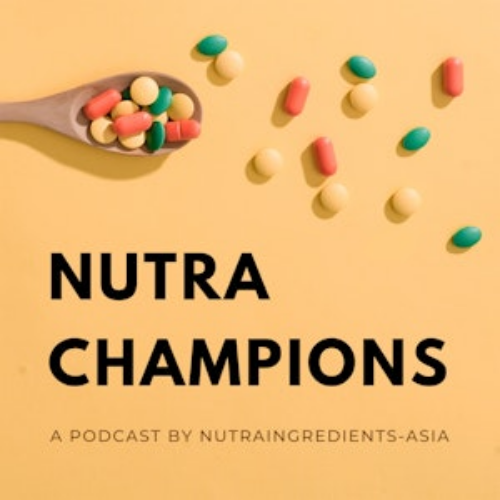Disrupting China’s meal replacement market: Ruffood’s relying on relentless NPD to create new generation of products

The company has three meal replacement products in different formats, solid, liquid and powder which has since combined undergone 27 formulation revision since the company was established in 2015.
On its website, Ruffood records the timeline and product upgrades each time a formulation has been improved. For instance, in April 2020, the firm launched its liquid version V3.7.
Bo En, founder and chief test officer at Ruffood told NutraIngredients-Asia the revision was in net content and taste.
He explained the previous liquid version (V3.5) was 480 ml per bottle, and many customers had remarked that it was difficult to finish an entire bottle in one go. Hence for V3.7, the firm reduced the net content down to 350 ml.
In July 2020, Ruffood also launched its solid whey protein bar V1.9.
Bo added: “Solid version V1.0 to V1.3 were in the shape of granules requiring consumers to take about 20 grains per meal, which is not convenient. Solid version V1.5 to V1.7 was in a block shape, but the taste is not ideal.”
For V1.9, the firm used a cold processing pastry technology to improve the taste, but kept the block shape.
Bo told us: “Different versions of the product are essentially product upgrades based on optimising customers’ user experience.”
The company had initially started with its solid and powder versions before moving into liquid format in 2018, in order to meet consumer needs for convenience. It has since become its most popular product.
Currently, Ruffood has completed two fundraising rounds, accumulating more than RMB10m (US$1.5m) which Bo said was mostly used for its R&D.
In the future, the firm is planning to focus on its liquid range and launch more flavours.
China’s meal replacement market
Bo told us he was inspired to start Ruffood because he could not find a product that suited his needs.
“I worked previously in the software development industry and the busy schedule did not allow me to eat on time. I needed a kind of convenient and nutritious meal replacement product, but there was no meal replacement product in the domestic market to meet my needs.
“The meal replacement products on the market are all low calorie and low fat, but what I needed was a complete nutrition and reasonable calorie product.”
At present, China’s meal replacement market is categorised into narrow and broad. Bo explained that the narrow meal replacement market catered to specific functional needs such as weight loss.
“This market is very big, but the life cycle of the brand is very short.”
In the broad meal replacement market, it is still in the infancy stage in China, and was geared towards public diet management, rather than a specific function.
Bo expressed there was still a general lack of awareness of such alternative foods and meal replacement products among Chinese consumers.
Over the past five years, Ruffood has amassed 250,000 customers, of which more than 180,000 were male customers, mainly through word-of-mouth.
Its main consumers are white-collar workers in first-tier cities working in the Internet and finance industries, which account for around 65%. About 15% are students and teachers, and 5% civil servants like doctors and police.
Bo added the remaining 15% of consumers were slightly wealthier than the rest of the population and were looking for products for overall health management.
What goes in
Ruffood’s meal replacement products contain a range of macronutrients.
Its carbohydrate is mainly obtained from oat flour and maltodextrin, while dietary fiber from resistant dextrin, psyllium seed husk and soy fiber. Its protein sources are milk and soy.
Fat mainly comes from plant fat and medium chain triglycerides (MCT), which is responsible for providing unsaturated fatty acids and medium chain fatty acids for fast energy supply.
Bo told us the company sources most of its raw ingredients from international brands.
For example, soy protein is purchased from DuPont (US), milk protein from Arla (Denmark), and medium chain triglycerides from IOI Corporation Berhad. The carbohydrates are mainly sourced locally, while its trace minerals and vitamins from China-Germany joint ventures.
Ruffood’s liquid product is manufactured in Suzhou, Jiangsu province, while the solid and powder range are manufactured in Hangzhou, Zhejiang province.
Sales channels
Ruffood’s products are sold on various e-commerce platforms such as Tmall and JD, as well as medical and health platform (Dingxiangyuan), sports and fitness platform (LEFIT), and CenturyMart which is a brick-and-mortar supermarket with an online presence.
According to Bo, the company’s products are distributed on almost one hundred platforms.
As of now, Ruffood has no plans to expand overseas, perhaps because meal replacement products already exist in markets like Europe, America, Japan and South Korea.
In addition, “Cross border development will encounter various problems, like rising costs, which will lead to the low-competitiveness of our products in terms of price,” Bo added.
The company is anticipating a 50% year-on-year sales growth this year despite the ongoing pandemic.
We’ll be shining the spotlight on Active Nutrition in our Growth Asia 2020 interactive broadcast series. Register for free here.

















